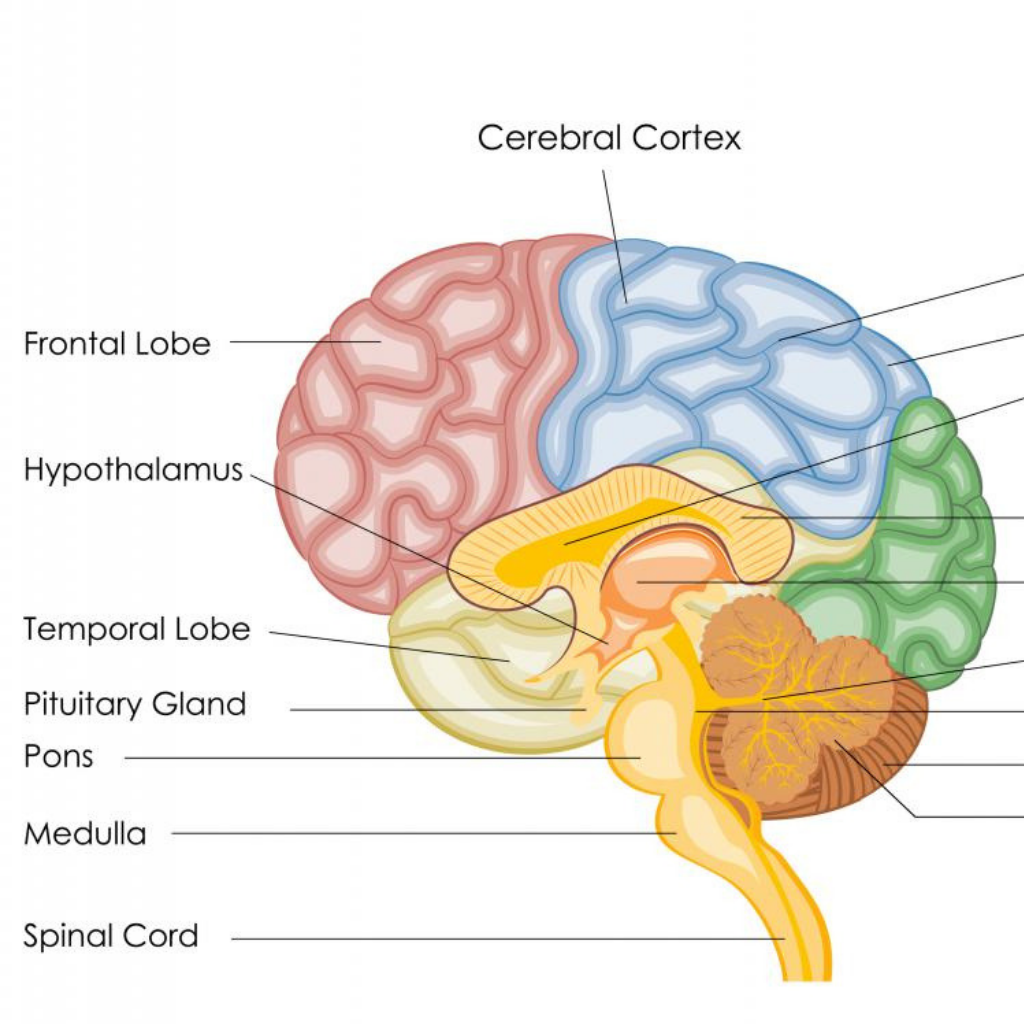Edit: For those asking for more details...By delivering a specific frequency to specific pathways in the tongue, we are becoming able to reverse dizziness, balance problems, and have even seen progress in some individual's hearing problems. This protocol is one of the simpler protocols, and as detailed within this post, it is delivered automatically with your Tongue Stimulator purchase.
If you’ve been watching our Facebook group you will likely have noticed the buzz about microcurrent stimulation of the tongue, and the theories of what it can accomplish. Many of you however may wonder simply why on earth you’d want to stimulate the tongue – why would you want to place something electrical in your mouth? To answer this question, we must first dive into the Pons, and discover what it does, and where it is located.
The pons is a major structure in the upper part of your brainstem. It is involved in the control of breathing, communication between different parts of the brain, and sensations such as hearing, taste,and balance. It is also a major neural highway – almost all signals from the brain to the body, and from the body to the brain pass through the Pons.

The cranial nerves are a set of 12 paired nerves that arise directly from the brain. The cranial nerves serve functions such as smell, sight, eye movement, and feeling in the face. The cranial nerves also control balance, hearing, and swallowing. So needless to say, they are immensely important.
The twelve cranial nerves, in order from I to XII are: olfactory nerve, optic nerve, oculomotor nerve, trochlear nerve, trigeminal nerve, abducens nerve, facial nerve, vestibulocochlear nerve, glossopharyngeal nerve, vagus nerve, spinal accessory nerve, and hypoglossal nerve. We have seen the importance of the vagus nerve which descends directly from the head into the body proper. It regulates digestion and helps regulate the autonomic nervous system and our fight-or-flight reactions. It even regulates aspects of the immune system, which protects the body from infection and injury. We’ve been actively promoting Vagus Nerve Stimulation externally for years now, and have seen phenomenal results in combating all types of inflammation.
The PONS might just be the next step. Stimulating the Pons can have a major influence on the rest of the body... but the question remains...how to do we get to it, what is the best path? You may have guessed it already: Yes, the tongue. In earlier literature, the Russians in their Scenar training did mention stimulation of the tongue, but they held back on its importance. When reading about the brain’s neuroplasticity in Dr. Norman Doidge’s book The Brain’s Way of Healing, I came upon a chapter concerning the Pons and the key role it has of being the area that has the capacity of resetting the brain. Great health recoveries are recounted in this book and although I had been using my microcurrent devices to stimulate the tongue in the past, I realize now that I didn’t really know the power behind what I was doing.
Stimulating the tongue with microcurrent may be the road to resetting the brain, particularly when we understand the huge amount of neuroreceptors that are contained in the tongue. There are forty-eight different kinds of sensory receptors on the tongue, fourteen on the tip alone, to sense touch, pain, taste and so on. By analysis there are 15,000 to 50,000 nerve fibers on the tip of the tongue, which create a huge information highway. There are two major nerve fibers in the tongue. The first, the lingual nerve, is for receiving touch sensation; the second, a branch of the facial nerve, is for receiving taste sensation. These nerves are part of the cranial nerve system which sits two inches behind the back of the tongue (Doidge, 2016). This is the area closely connected to the brain’s processing areas for movement, sensation, mood, cognition and balance.
Balance problems and dizziness that can cause disorientation (as is often seen in accident victims or by negative reactions to certain antibiotics, or other medications such as those used in chemotherapy) have been corrected by microcurrent stimulation of the tongue. This is an avenue that is hardly explored. Getting the brain to override inaccurate signals given off by damaged tissue has tremendous healing value. Electrical stimulation of the tongue’s sensory receptors to balance neurons in the brain stem is a brilliant idea of Doige’s, and something that can certainly be put into practice using these guidelines. Of course, the pressing question up until now was how. How could we treat the tongue? Y shaped attachments were spaced too far apart, and were bulky. Device electrodes themselves would not fit comfortably across the tongue and crossed areas contrary to the mechanics of the protocol… we needed something with two prongs that was flexible, and thin, and that would function effectively at spreading the current. Because of this, this protocol has seen little action. However, we have found a solution. The Tongue Stimulator, which you can view in the product demo below, is perfect for this type of treatment and is available now. Please bare in mind that research indicates that you need a very specific frequency of 200hz to get the program to work. This means that the PONS protocol is restricted to devices that can set their own frequency.
The entire protocol is detailed in Current Medicine 2nd Edition under Cranial Nerve Stimulation.
It's worth noting that people are finding this attachment very helpful in a variety of different treatments, and not just for the Tongue (as mentioned in the video above), its ability to be flexible while also maintaining its rigidity to enable treatment is unparalleled. We recommend cleaning the electrode with Rubbing Alcohol to ensure it stays sanitary between treatments (especially if its being used on the Tongue).
Don't wait, get your Tongue Stimulator now by clicking here while supplies last!
If you have any questions about the Tongue Stimulator, please don't hesitate to ask.

